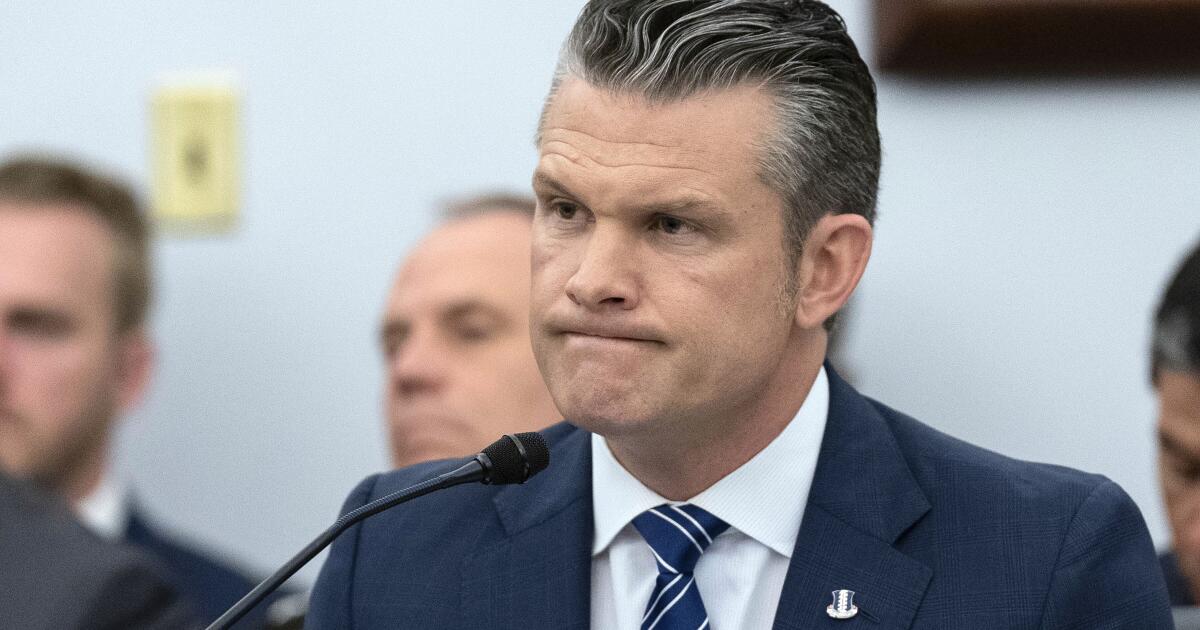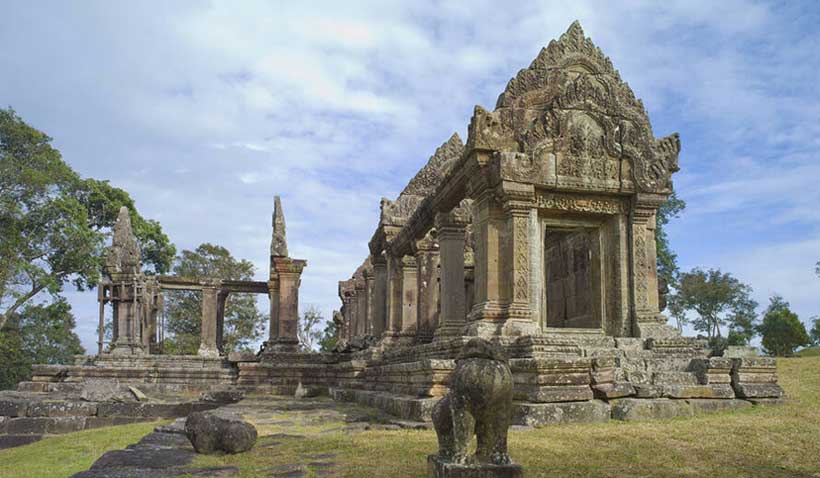Column: Defense Secretary Pete Hegseth’s embrace of unchristian Christian nationalism
Pete Hegseth, widely considered the least qualified Defense secretary in American history, is hardly anyone’s version of the ideal Christian husband and father.
Only 45 years old, he’s been married three times.
His first marriage — to his high school sweetheart — lasted a mere four years, deteriorating after Hegseth admitted to multiple extramarital affairs.
A couple of years later, he married his second wife, with whom he had three children. During that marriage, he fathered a child with a Fox News producer who eventually became his third wife.
He paid off a woman who accused him of sexual assault (he denies the assault). He routinely passed out drunk at family gatherings and misbehaved in public when inebriated, according to numerous witnesses. His own mother once accused him of being “an abuser of women,” though she later retracted her claims when Hegseth was facing Senate confirmation.
Still, the Senate’s Republican majority, cowed by President Trump, confirmed his appointment. Hegseth has two qualities that Trump prizes above all others. He is blindly loyal to the president, and he looks good on TV.
After his installation, Hegseth proceeded to fire top military brass who happened to be Black or women or both. He has restored the names of Confederate generals to Army bases (Bragg and Benning). His petty “anti-woke” crusade led him to strip the name of the assassinated gay rights leader Harvey Milk, a former Naval officer who served honorably, from a Navy ship. And he has considered doing the same to a ship named in honor of the abolitionist and Civil War hero Harriet Tubman. He has said that women do not belong in combat roles, and has kicked out transgender soldiers, cruelly stripping them of the pensions they earned for their service.
In March, he shared classified information about an impending American airstrike in Yemen on an unsecured Signal group chat that included his wife, on purpose, and the editor of the Atlantic, by accident.
He is, in short, the least serious man ever to lead this nation’s armed forces.
As if all that weren’t dispiriting enough, Hegseth is now in bed (metaphorically) with a crusading Christian nationalist.
Earlier this month, Hegseth made waves when he reposted on social media a CNN interview with Douglas Wilson, the pastor and theocrat who is working hard to turn the clock back on the rights of every American who is not white, Christian and male.
In the interview, Wilson expounded on his patriarchal, misogynistic, authoritarian and homophobic views.
Women, he said, should serve as “chief executive of the home” and should not have the right to vote. (Their men can do that for them.) Gay marriage and gay sex should be outlawed once again. “We know that sodomy is worse than slavery by how God responds to it,” he told CNN’s Pamela Brown. (Slavery is “unbiblical,” he avowed, though he did bizarrely defend it once, writing in 1990 a pamphlet that “slavery produced in the South a genuine affection between the races that we believe we can say has never existed in any nation before the War or since.”)
When a new outpost of his church opened in Washington, D.C ., in July, Hegseth and his family were among the worshippers. CNN described Hegseth’s presence as “a major achievement” for Wilson.
“All of Christ for All of Life,” wrote Hegseth as he endorsed and reposted the interview. That is the motto of Wilson’s expanding universe, which includes his Christ Church in Moscow, Idaho, the center of his Communion of Reformed Evangelical Churches, a network of more than 100 churches on four continents, parochial schools, a college, a publishing house and media platforms. “All of Christ for All of Life” is a shorthand for the belief that Christian doctrines should shape every part of life — including government, culture and education.
Wilson is a prolific author of books with titles such as “Her Hand in Marriage,” “Federal Husband,” and “Reforming Marriage.” His book “Fidelity” teaches “what it means to be a one-woman man.” Doubtful it has crossed Hegseth’s desk.
“God hates divorce,” writes Wilson in one of his books.
Given the way sexual pleasure is celebrated in the Old and New Testaments, Wilson has a peculiarly dim view of sex. I mean, how many weddings have been graced with recitations from the Song of Solomon, with its thinly disguised allusions to pleasurable sexual intimacy? (“Let him kiss me with the kisses of his mouth! For your love is better than wine.”)
Wilson’s world is considerably less sensual.
“A man penetrates, conquers, colonizes, plants,” he writes in “Fidelity.” “A woman receives, surrenders, accepts.” Mutual sexual pleasure seems out of the question: “The sexual act cannot be made into an egalitarian pleasuring party.” Ugh.
There is nothing particularly new here; Wilson’s ideology is just another version of patriarchal figures using religion to fight back against the equality movements of the late 19th and 20th centuries. They are basically the hatemongers of the Westboro Baptist Church dressed up in respectable clothing.
“Some people may conflate Christian nationalism and Christianity because they both use the symbols and language of Christianity, such as a Bible, a cross and worship songs,” says the group Christians Against Christian Nationalism on its website. “But Christian nationalism uses the veneer of Christianity to advance its own aims — to point to a political figure, party or ideology instead of Jesus.”
What you have in people like Hegseth and Wilson are authoritarian men who hide behind their religion to execute the most unchristian of agendas.
God may hate divorce, but from my reading of the Bible, God hates hypocrisy even more.
Bluesky: @rabcarian
Threads: @rabcarian


